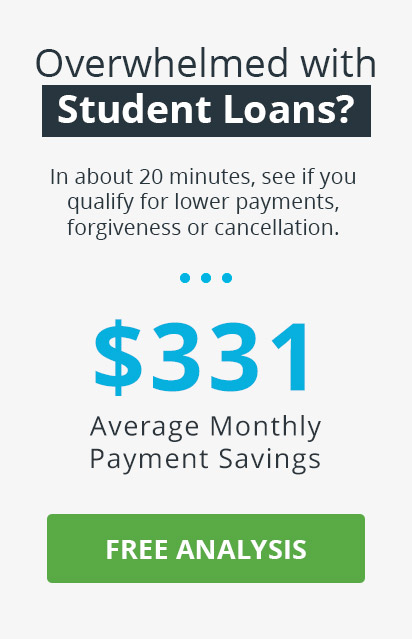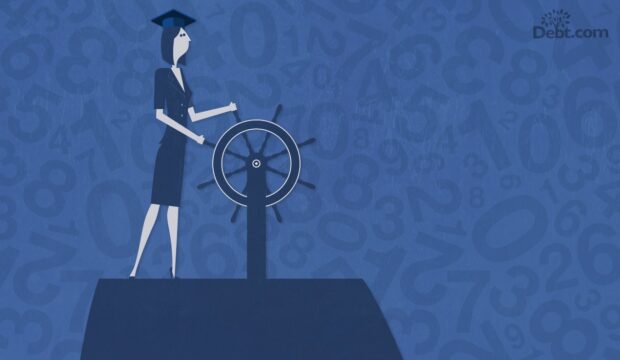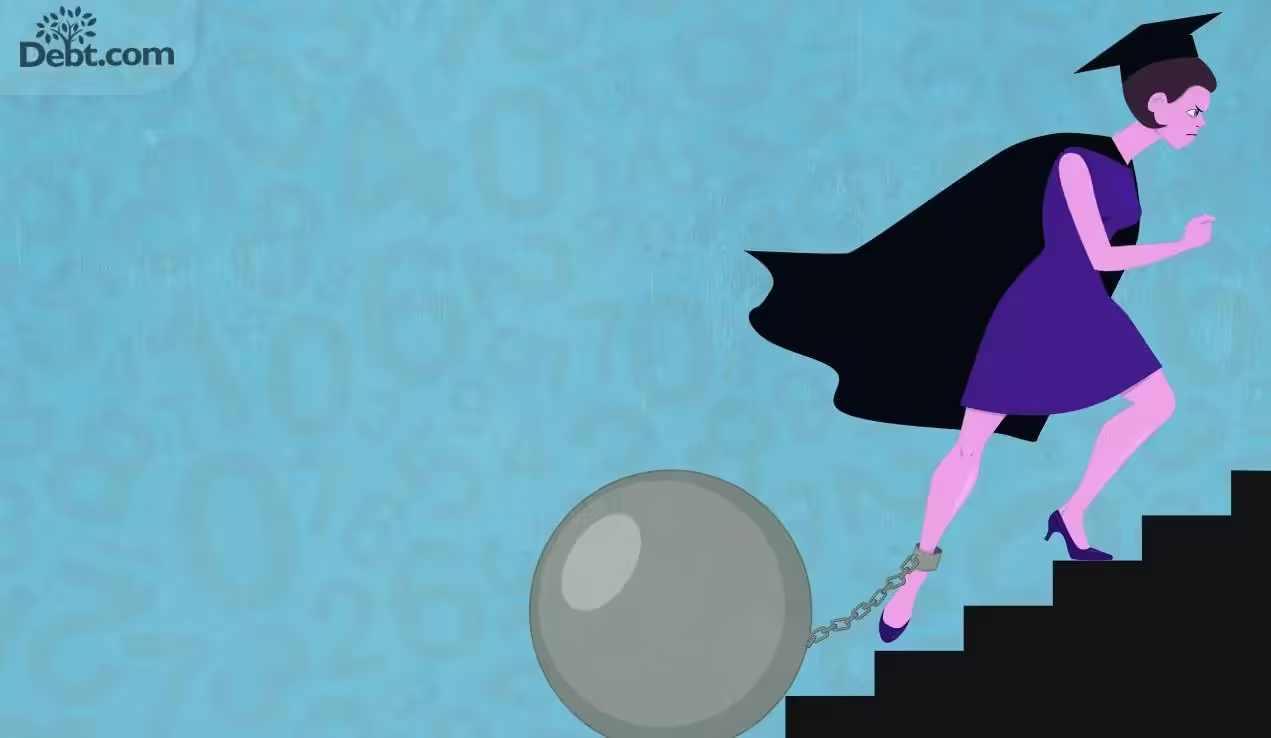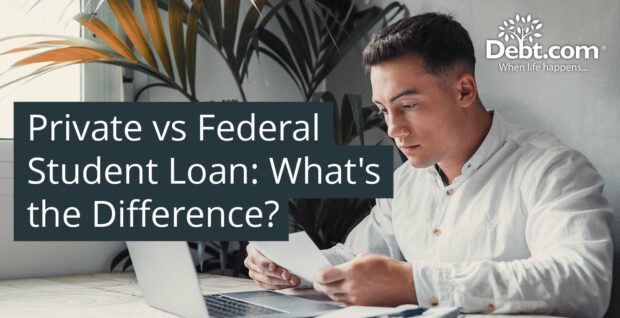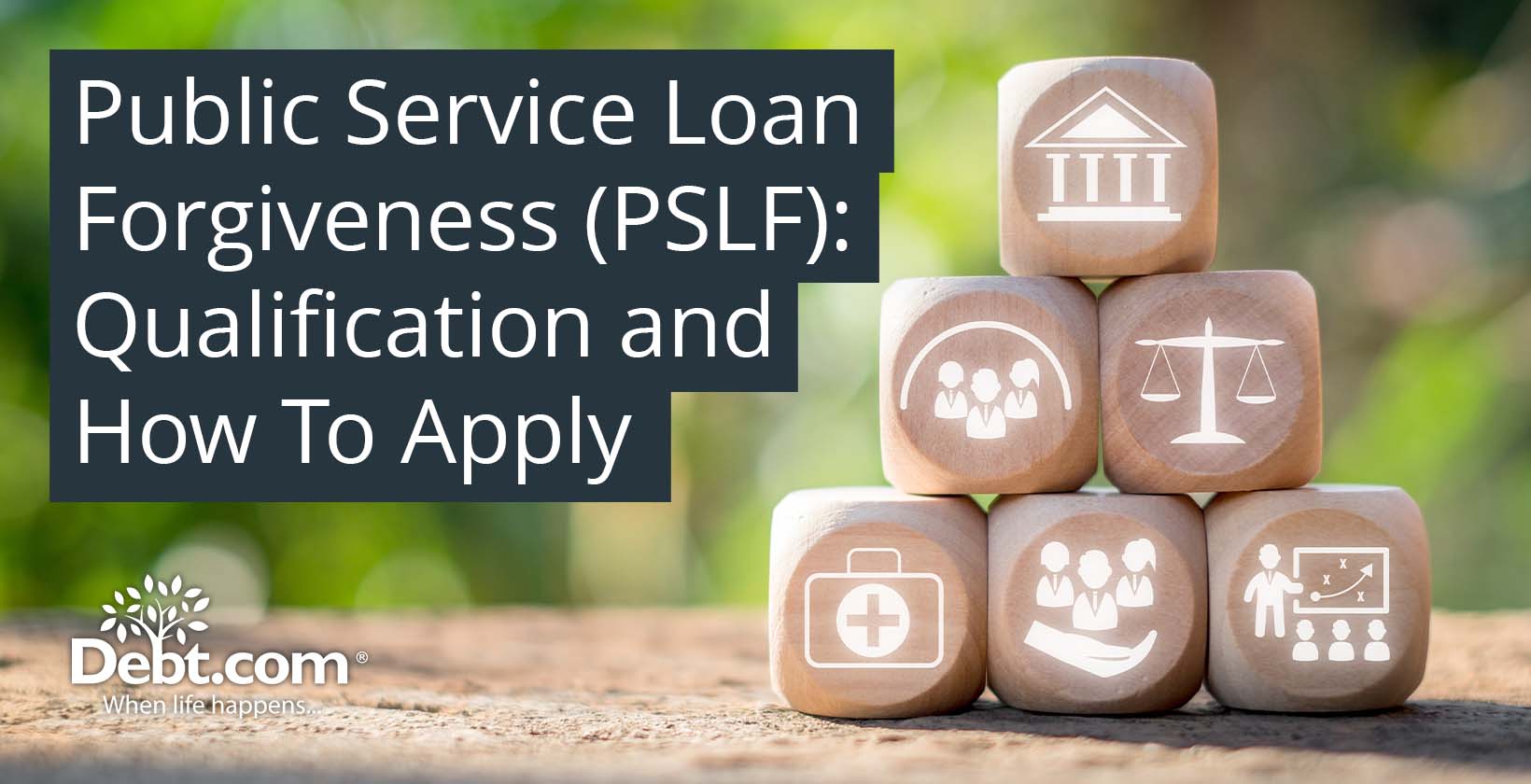
Public Service Loan Forgiveness (PSLF) is a federal program that forgives qualifying federal student loans for debtors who meet specific requirements and work for qualifying public employers. The PSLF program demands that borrowers be employed by a US federal, state, local, or tribal government or a not-for-profit organization. It needs to be full-time or at least 30 hours a week, as defined by the employer.
A borrower who qualifies for PSLF must have Direct Loans or combine multiple federal student loans into one and be on an income-driven repayment plan. Borrowers must make 120 eligible monthly payments, which must be made while employed by an eligible employer as part of the PSLF requirements.
Applying to PSLF, or public student loan forgiveness, involves ensuring that the debtor has the correct type of loan. Confirm the and submit the PSLF employment certification documents annually or every change of employers. Use the PSLF Help Tool on the Federal Student Aid website for help filling out and submitting the PSLF form to proceed with loan forgiveness student loans.
Understanding how to apply for PSLF provides financial assistance to borrowers with federal student loans. Considering the eligibility requirements allows borrowers to plan their repayment plans and careers to the fullest extent attainable to optimize program benefits. Knowing what is PSLF results in big savings because, upon fulfilling the requirements, the remaining loan sum is forgiven. A solid understanding of PSLF helps borrowers make wise decisions, lighten their financial load, and secure their future.
Table of Contents
What is Public Service Loan Forgiveness?
Public Service Loan Forgiveness (PSLF) is a federal program that forgives qualifying federal student loans if debtors work for a qualifying public service employer and complete 120 qualifying monthly payments. The initiative was launched in 2007 to prompt more debtors to prefer occupations in public service. The PSLF program wipes off some of the federal loan debt associated with their education. PSLF has erased $69.2 billion worth of student loans for 946,000 borrowers as of July 2024.
The College Cost Reduction and Access Act of 2007 constructed the PSLF program to encourage people to start and stay in public service careers. PSLF meaning lies in the program’s objective to enable graduates to work in sectors that benefit society, such as government, non-profit organizations, and other public service roles. The program aims to help borrowers who go on to become teachers, nurses, or police officers. The program is known as the Public Student Loan Forgiveness Program or simply the Student Loan Forgiveness Program. Borrowers must work full-time, be employed by a federal, state, local, tribal, or not-for-profit entity in the US, and make 120 qualifying payments under a qualifying repayment plan to be eligible.
How does PSLF Work?
PSLF works by forgiving the remaining balance on Direct Federal student loans after the borrower completes 120 qualifying monthly payments while working full-time for a qualifying public service employer. The monthly payments must be under an income-driven repayment plan.
Government agencies and nonprofits that satisfy the requirements of the PSLF program are considered employers. The 120 qualifying payments must be made under a qualifying repayment plan, such as an income-driven repayment (IDR) plan. The borrower must work full-time for a qualifying employer, including nonprofit organizations or federal, state, local, or tribal government agencies.
Payments must be made on time and in full while maintaining employment with a qualifying public service employer. The PSLF helps employees lift the burden of federal student loans to prompt public service. The debtor then submits the Employment Certification Form and an application for forgiveness to FedLoan Servicing for assessment once the prerequisites are met.
What is the Importance of Public Service Loan Forgiveness?
The importance of Public Service Loan Forgiveness is that it provides financial relief to borrowers working in public service by forgiving the remaining student loan after 120 qualifying payments. The PSLF program helps public servants such as teachers, nurses, and government officials lessen the heavy burden of student debt. The program has eliminated 946,000 students’ $69.2 billion in student loans as of July 2024, according to the Education Department.
Incentives such as financial support serve the community by motivating more people to pursue and continue careers in public service. PSLF facilitates the recruitment and retention of committed professionals in professions important to society’s welfare by providing loan forgiveness in student loans following ten years of eligible payments. The PSLF program is another example of how the government is dedicated to assisting people who make public service their vocation.
Who Qualifies for Public Service Loan Forgiveness?
The borrowers who qualify for Public Service Loan Forgiveness are employed full-time by a qualifying employer, have Direct Loans, are enrolled in an income-driven repayment plan, and make 120 qualifying payments. Public Service Loan Forgiveness (PSLF) is a financial relief program that privileges debtors to repay school loans after completing the necessary payments.
Debtors must work full-time for a qualifying employer, such as a government agency or a non-profit, as per PSLF qualifications. The applicant must complete 120 qualifying monthly payments or 10 years through a qualifying repayment plan.
An Income-Driven Repayment (IDR) modifies monthly payments according to family size and income. Income-Driven Repayment Plans are the best option for borrowers seeking PSLF due to manageable monthly payments and the ability to receive loan forgiveness after 120 payments.
Borrowers must hold Direct Loans or combine other federal student loans into a Direct Consolidation Loan as part of PSLF requirements. Borrowers must use the PSLF Help tool to complete a PSLF form to be eligible and be informed on how to qualify for PSLF. The application allows users to look up an employer’s eligibility, request an eligibility review, create and sign the PSLF form, and electronically request employer certification and signature.
What Types of Employment are Qualified for PSLF?
The types of employment qualified for PSLF are listed below.
- Government Organizations: The Public Service Loan Forgiveness (PSLF) program allows full-time employment in government organizations at any level. Employment includes federal, state, local, or tribal employment and full-time volunteer service in programs such as AmeriCorps or the Peace Corps, provided other program requirements are met.
- 501©(3) Non-Profit Organizations: Employment with tax-exempt nonprofit organizations, such as charitable, religious, educational, and scientific institutions, qualifies for the Public Service Loan Forgiveness (PSLF) program. A full-time 501©(3) organization employee who puts in at least 30 hours a week must be eligible.
- Public Education: The Public Service Loan Forgiveness (PSLF) program applies to full-time employment in public education, including schools, colleges, universities, and educational service agencies. Eligibility requires working at least 30 hours per week and being employed by a government or non-profit organization providing public education services. PSLF qualifying employers include public schools, public colleges and universities, and public child and family service agencies.
- Public Health: The Public Service Loan Forgiveness (PSLF) program applies to full-time employment in public health, including healthcare professionals such as doctors, nurses, and therapists. Support personnel in hospitals and clinics are eligible.
- Law Enforcement and Public Safety: The PSLF program applies to full-time employment in law enforcement and public safety, including police officers, corrections officers, firefighters, and emergency management personnel. Eligibility requires full-time employment by a government organization at any level, including federal, state, local, or tribal, and specific non-profit organizations that provide public safety services.
- Other Public Services: Other public services include public library services, early childhood education, public interest law services, and public interest law services, including prosecution or public defense.
Working at least 30 hours per week is required to qualify for the Public Service Loan Forgiveness (PSLF) program. It counts as full-time employment for PSLF purposes, regardless of the employer’s definition of full-time work. The requirement guarantees that the borrower contributes consistently and significantly to the public service endeavors.
A borrower is allowed to combine multiple part-time jobs, ensuring the combined hours add up to at least 30 hours per week. Each part-time employer must qualify under the PSLF program rules. The flexibility allows debtors to combine various part-time roles to meet eligibility criteria for loan forgiveness.
Which Types of Student Loans are Qualified for PSLF?
The types of student loans qualified for PSLF are Direct Subsidized, Direct Unsubsidized, Direct PLUS, and Direct Consolidation Loans. The Public Service Loan Forgiveness (PSLF) program is designed to encourage individuals to work in public service by offering loan forgiveness after 120 qualifying payments. Direct Loans are eligible because they are part of the federal Direct Loan program, specifically structured to support public service workers.
Student loans not eligible for Public Service Loan Forgiveness (PSLF) include Federal Family Education Loan (FFEL) Program loans, Perkins Loans, and private student loans. These types of loans for students are not eligible for PSLF for being part of the federal Direct Loan program. Borrowers are able to make the loans eligible by merging into a Direct Consolidation Loan, which is eligible for PSLF. Consolidation resets the count of qualifying payments to zero, requiring borrowers to start making 120 qualifying payments from scratch under the new Direct Consolidation Loan.
Private student loans are ineligible for PSLF because they originated from private lenders, such as banks, credit unions, or online lenders, rather than the federal government. PSLF is intended for government-backed federal student loans, which provide more flexible repayment choices and debt forgiveness initiatives. Private lenders’ terms govern private loans, and any repayment terms or forgiveness changes require congressional legislation.
How to Apply for Public Service Loan Forgiveness?
To apply for Public Service Loan Forgiveness, follow the 6 steps below.
- Work for a qualifying employer. Qualifying employers include government organizations, 501©(3) non-profits, AmeriCorps, and certain non-profits providing public service. Full-time employment by a U.S. government, state, local, tribal government, or not-for-profit organization aligns with loan forgiveness criteria, ensuring eligibility.
- Confirm loan and employment eligibility. Applicants must have direct loans, work full-time with an approved employer, and fulfill 120 qualifying monthly payments as part of a repayment plan to be eligible for PSLF.
- Enroll in an income-driven repayment plan. Enroll in an income-driven repayment (IDR) plan, which modifies monthly loan payments depending on family size and income, to apply for Public Service Loan Forgiveness (PSLF). The repayment plans contribute to the 120 qualifying payments required for PSLF.
- Complete the Employment Certification form annually. Submit the Employment Certification form once a year to be eligible for Public Service Loan Forgiveness (PSLF). It verifies that the borrower is employed by an eligible employer, ensuring that payments are accurately documented and simplifying eligibility when requesting forgiveness.
- Track eligible payments: Send the loan servicer an Employment Certification Form (ECF) to track qualifying payments for the Public Service Loan Forgiveness (PSLF) program. The form assists in tracking the borrower’s progress toward making 120 qualifying payments and validates eligible employer employment.
- Submit PSLF applications: Fill out and submit the Public Service Loan Forgiveness (PSLF) application online at StudentAid.gov to be eligible for the program. Employer certification, qualifying employment facts, and personal information are required on the form. Ensure full-time employment by an approved company. Send the completed form to the loan servicer via mail or online.
What Documentations are needed to Apply for PSLF?
The documents needed to apply for PSLF are listed below.
- PSLF Form: The PSLF Form verifies employment with an eligible company and requests forgiveness of the remaining Direct Loan debt following 120 qualifying monthly payments. The form verifies eligibility and requires detailed information about the applicant’s employment history, including employer name, job title, and employment dates. The Department of Education uses the data to determine if the applicant’s employment qualifies for PSLF.
- Employer’s Federal Employer Identification Number (FEIN): The Employer’s Federal Employer Identification Number (FEIN) is a nine-digit number assigned by the Internal Revenue Service (IRS) to identify a business entity. Verifying the employer’s eligibility as a public service organization is needed to apply for Public Service Loan Forgiveness (PSLF). The Department of Education attests to the employer’s eligibility, including the ability to operate as a non-profit or government agency.
- Employment Certification: The Service Loan Forgiveness (PSLF) program requires an Employment Certification, which includes job title, employment dates, and employer nature. The document verifies employment with an eligible employer while making 120 monthly payments and is needed for the application process. The Department of Education needs employment certification to confirm full-time work, a prerequisite for loan forgiveness.
- Tax-Exempt Status: Tax-Exempt Status is a designation for non-profit organizations exempt from federal income tax under the Internal Revenue Code. The status is granted to non-profit organizations classified under sections 501©(3) or 501©(4). PSLF applicants must validate the employer’s public service status.
How Long is the Process of PSLF?
The PSLF process takes at least 10 years and involves a several-month application process. PSLF involves submitting the PSLF application, undergoing a review by the loan servicer, and receiving confirmation of forgiveness. Public Service Loan Forgiveness (PSLF) requires 120 qualifying monthly payments made under a qualifying repayment plan while working full-time for a qualifying employer.
The number of qualifying employers, the quality of the paperwork, and other variables affect the timeline. The Department of Education recommends a processing time of at least 90 business days, but actual times range from weeks to more than six months. Ensure that employment documentation is accurate and full to prevent delays. Borrowers must prepare for a few months before receiving confirmation of forgiveness.
What are the Factors Affecting the Timeline of PSLF?
The factors affecting the timeline of PSLF are listed below.
- Employment Documentation: Employment documentation refers to the written records that detail various aspects of an employee’s relationship with the employer. It maintains transparency, ensures legal compliance, and supports employment decisions. Employment documentation verifies eligibility and tracks progress for use in the Public Service Loan Forgiveness (PSLF) program. Accurate and timely submission of certification forms helps for a smooth application process, and delays or inaccuracies extend processing timelines.
- Number of Employers: The number of employers refers to the total number of distinct employers an employee has worked for, including full-time, part-time, and temporary positions across various industries. The number of employers influences the timeline of the Public Service Loan Forgiveness (PSLF) program. Borrowers must submit new certification forms for each job change, causing delays and gaps in qualifying payments.
- Employment Gaps: Employment gaps are periods during an employee’s professional career when they are not formally employed, voluntarily or involuntarily, for various reasons. Employment gaps in the Public Service Loan Forgiveness (PSLF) program delay the timeline. The program requires meticulous documentation to count qualifying employment periods towards 120 payments. Maintain thorough and accurate employment documentation to avoid extending the timeline for achieving loan forgiveness.
- Payment History: Payment history records a borrower’s credit and debt payments, including punctuality, delinquency amounts, and adverse public records such as bankruptcies. Employment documentation is needed to verify qualifying payments in the Public Service Loan Forgiveness (PSLF) program. Accurate and timely submission of certification forms helps to count qualifying payments towards 120 payments, preventing delays.
- Follow-up Requirements: Follow-up requirements involve actions taken to ensure completed processes or communications, such as sending reminders, requesting additional information, or verifying the status of ongoing tasks. Follow-up requirements impact the Public Service Loan Forgiveness (PSLF) program’s timeline if employment documentation is incomplete or contains errors, requiring corrective actions to avoid delays and ensure accurate documentation.
- Changes in Legislation or Policy: Legislation refers to government-made laws and rules, while policy is a set of principles or actions adopted to achieve rational goals. New legislation or policy adjustments impact the timeline for Public Service Loan Forgiveness (PSLF), either introducing flexible criteria or imposing stricter requirements, accelerating or hindering borrowers’ progress.
Is the Public Service Loan Forgiveness Application Process Free of Charge?
Yes, the Public Service Loan Forgiveness application process is free of charge. The U.S. Department of Education oversees the Public Service Loan Forgiveness (PSLF) program, which provides financial assistance to debtors who work in public service. Applicants apply through the official StudentAid.gov website, and the process is free. Third-party businesses that offer help in exchange for a charge must be avoided.
Borrowers assess eligibility for loan forgiveness and complete the application process with the assistance of the Department of Education, which offers free access to information and support. The government ensures that no extra financial obstacles, such as application fees, discourage qualified borrowers from applying. Eligible persons access the procedure at no cost using the official StudentAid.gov website, which offers the required forms and information.
What can be the Reasons to Getting Rejected for PSLF?
The reasons for getting rejected for PSLF are listed below.
- Income Applications: PSLF is denied because of income-driven repayment schedules. Borrowers must be on an approved income-driven repayment plan to be eligible. Standard repayments and payments that remain the same based on income are not considered toward the 120 qualifying payments. Inaccuracies or omissions in income information lead to the borrower being placed on the wrong repayment plan, complicating eligibility.
- Ineligible Loans: Applications for Public Service Loan Forgiveness (PSLF) are denied because the debts are not eligible. Parent PLUS and Federal Family Education Loan (FFEL) Program loans are examples of federal student loans that are not eligible for PSLF. Borrowers must consolidate their debts into a Direct Consolidation Loan before becoming eligible. The 120 eligible payments do not include pre-consolidation installments, frustrating borrowers who thought they were working toward forgiveness.
- Ineligible Employer: Applications for Public Service Loan Forgiveness (PSLF) are denied because the employers are not eligible. Borrowers must work for qualifying employers, which include government agencies, tax-exempt nonprofits, and other non-profits that offer specific public services. Employment only counts towards PSLF’s 120 qualifying payments if it matches the standards. The PSLF Help Tool contains a “likely ineligible” listing for specific firms, indicating that the Department of Education has not verified eligibility.
- Wrong Repayment Plan: Public Service Loan Forgiveness (PSLF) applications are rejected because borrowers are on the wrong repayment plan. Borrowers must be enrolled in an income-driven repayment (IDR) plan to qualify. Borrowers make the mistake of enrolling in programs that aren’t qualified, such as the Graduated Repayment Plan, which does not count toward PSLF.
- Incorrect Payment Count: Borrowers must work for a qualifying job and make 120 qualifying payments to be eligible. Loan servicer errors, inaccurate repayment schedules, or unrecorded suspension or deferment periods mislead borrowers into thinking they have made more qualifying payments. Forgiveness is attainable if payment counts are routinely verified and irregularities are quickly resolved.
How to Avoid Mistakes when Applying for PSLF?
To avoid mistakes when applying for PSLF, understand and meet the program’s requirements. Ensure having eligible federal Direct Loans, as other loan types, such as Federal Family Education Loans (FFEL) and Perkins Loans, do not qualify unless consolidated into a Direct Loan. Use the PSLF Employer Search tool to authenticate the Employer Identification Number (EIN) on the W-2 form and ensure the employer is eligible for PSLF.
Borrowers must make 120 qualifying payments under an income-driven repayment (IDR) plan while working full-time for a qualifying employer. Keep track of payments and employment by submitting the PSLF form annually or whenever the employer changes. Paying close attention to the instructions and remaining current on program updates raises the chances of successfully getting loan forgiveness through PSLF.
Borrowers must keep meticulous payment history records and regularly verify with the loan servicer that the payments are counted accurately towards PSLF. Stay informed about the program requirements and any legislation or policy changes affecting a debtor’s eligibility. Ensure that the remaining loans stay in good standing and avoid periods of deferment or forbearance, as these delay the progress toward forgiveness.
What are the Advantages of Public Service Loan Forgiveness?
The advantages of Public Service Loan Forgiveness are listed below.
- Debt Forgiveness: The Public Service Loan Forgiveness (PSLF) program offers debt forgiveness for borrowers pursuing public service careers. Federal student loan balance forgiveness is available to borrowers who have devoted ten years to the program and have made 120 qualifying monthly payments. The financial relief attracts and keeps talented professionals in public service by incentivizing the borrowers to contribute to society’s well-being.
- Tax-Free Forgiveness: The Public Service Loan Forgiveness (PSLF) program offers tax-free forgiveness of remaining loan balances after meeting program requirements. The relief ensures borrowers do not face substantial tax liabilities, providing financial relief and making the program beneficial for employees committed to public service careers.
- Encourages Public Service: The Public Service Loan Forgiveness (PSLF) program incentivizes borrowers to pursue careers in public service. PSLF offers loan forgiveness by working in government, non-profit, and community-focused roles. It ensures that skilled professionals are available to serve community requirements, fostering a motivated workforce and addressing workforce shortages.
- Financial Relief: Public Service Loan Forgiveness (PSLF) provides financial relief to public service employees by forgiving the remaining balance on Direct Loans after 120 monthly payments. It allows the employees to focus on careers and personal lives, improving financial stability and quality of life.
- Income-Driven Repayment Plans: Income-driven repayment (IDR) plans offer a significant advantage over Public Service Loan Forgiveness (PSLF) by making monthly loan payments manageable for borrowers working in the public service. Payments are based on discretionary income, which makes things easier for borrowers with smaller incomes. IDR Plans forgive remaining loan balances after 20-25 years of qualifying payments.
What are the Disadvantages of Public Service Loan Forgiveness?
The disadvantages of Public Service Loan Forgiveness are listed below.
- Limited Eligibility: The Public Service Loan Forgiveness (PSLF) program has limited eligibility. Borrowers must work full-time for a qualifying public service employer, be on an income-driven repayment plan, and make 120 qualifying payments. The strict requirements are challenging to meet, and many borrowers get disqualified due to technicalities or employment changes, limiting the program’s effectiveness in providing widespread student debt relief.
- Long Commitment: High loan balances hinder credit eligibility for other forms of credit. The Public Service Loan Forgiveness (PSLF) program requires 120 qualifying monthly payments, ten years of consistent, on-time work, and a decade-long commitment. The long commitment is challenging due to life changes and the need to meet PSLF criteria, delaying other financial goals.
- Complex Process: The Public Service Loan Forgiveness (PSLF) program is criticized for its complex process, which requires borrowers to work full-time, ensure loans are eligible, and make 120 qualifying payments. The complex process leads to errors or misunderstandings, which are overwhelming and challenging for many borrowers.
- Uncertainty: The Public Service Loan Forgiveness (PSLF) program faces disadvantages due to uncertainty, which leads to stress for borrowers. Government policies and funding changes impact the program’s future, and the complex application process makes it difficult for borrowers to plan for their financial futures.
- Lack of Awareness: The Public Service Loan Forgiveness (PSLF) program faces challenges due to a lack of awareness among beneficiaries, complex criteria, and meticulous record-keeping. It results in many borrowers missing out on debt relief, burdening many with student debt.
What are the Alternatives to PSLF?
The alternatives to PSLF are listed below.
- Income-Driven Repayment (IDR) Forgiveness: Income-Driven Repayment (IDR) Forgiveness is a federal student loan repayment plan that allows debtors to satisfy monthly payments based on revenues and family size. The remaining loan amount is forgiven after 20 or 25 years. IDR Forgiveness is a flexible option available to all borrowers, unlike Public Service Loan Forgiveness (PSLF).
- Teacher Loan Forgiveness (TLF): Teacher Loan Forgiveness (TLF) is a federal program that provides up to $17,500 in Direct Loans or Federal Stafford Loans. The loan is offered to teachers who work full-time for five consecutive years in low-income schools or educational service agencies. TLF offers a shorter path to forgiveness, making it an attractive alternative for educators seeking relief from student loan debt.
- Perkins Loan Cancellation: A Perkins Loan was a 5% fixed interest federal student loan for students with considerable financial need, paid by the government during school and grace periods. Perkins Loan Cancellation, an alternative to PSLF, targeted public service borrowers with a five-year and annual forgiveness duration.
- State-Sponsored Loan Forgiveness Program: State-sponsored loan forgiveness programs are state-specific efforts that help residents who are borrowers from graduate or college schools with loan repayment. The initiatives focus on particular professions and require dedication to work in marginalized communities. The program’s assistance is available after two to five years of service and encompasses federal and private loans.
- Military Service Loan Forgiveness: Military service members and veterans receive aid with loan repayment through Military Service Loan Forgiveness programs. The programs include lower interest rates, partial loan forgiveness, and complete discharge of student loans. Military Service Loan Forgiveness is designed for military members, offers instant relief, and lessens the requirement for qualifying payments and work in public service.
- Employer-Based Repayment Assistance (EBRA): EBRA is a program in which employers help employees pay off student loans. The program provides benefits, including trade-offs for wasted vacation time, retirement savings contributions, regular payments, signing bonuses, and service-based rewards.



